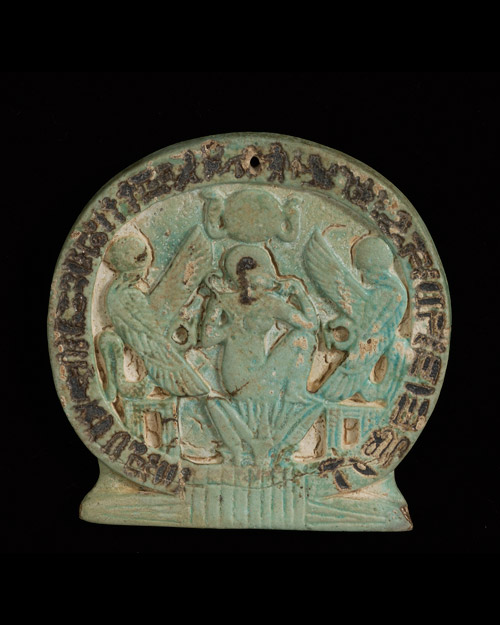
© 2003 Musée du Louvre / Christian Décamps
c. 800-740 BC
Glass faĂŻence
H.: 9.7 cm; W.: 9.6 cm; D.: 1 cm
Department of Egyptian Antiquities, Musée du Louvre
(E 10943)
This rare pendant takes the circular shape of the shen sign, a knotted string that symbolized the universe over which reigned the individual named inside it: here, a divine child, nude, finger in mouth, crowned by a solar disk, is sitting on a flowering lotus, flanked by two winged cobras that present him with the shen symbol. A text in black around the subject refers to Osorkon (“the great chief of the Ma”), the name of a Libyan dynasty that reigned in a kingdom to the west of the delta, regrouping the cities of Sais, Buto, and Imau. The solar child (here named Horakhty, “Horus of the Horizon”), appears on a large blue lotus, like the heart of golden yellow stamens that symbolizes the sun rising on the first morning of creation. This talisman combines the tendencies of the “Libyan” period, namely the 22nd and 23rd dynasties: a penchant for Creation imagery, a strong association between the earthly sovereign and the solar child of mythological rebirth, and faience-ware with relief decoration. Furthermore, its existence suggests that faience workshops existed in the “Kingdom of the West.”